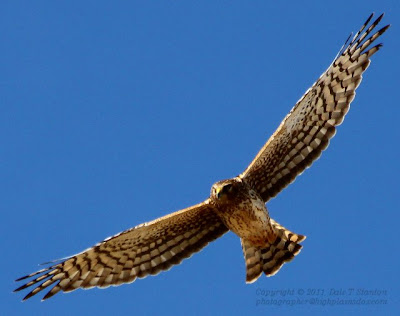While watching for photo-ops of various birds at my bird feeder this morning, I saw movement low in a lilac bush where its branches were dense. As I watched, this Cooper's hopped out onto the ground less than 7 yards from me - just long enough for me to get this shot. Unfortunately, I had to get it at an angle through a chain link fence.
Thinking about it, it's the perfect setup. A lilac bush isn't the deciduous forestry areas it normally prefers, but this Cooper's Hawk knew that the lilac bush was the staging area for sparrows - it being next to my feeder. The Cooper's main diet is birds - and they will chase them relentlessly through the woods. What better "diner" than an active bird feeder? It was apparently trying to take advantage of that setup.
The Cooper's Hawk is not a stranger to the panhandle. We are in its breeding and year round range, as is most of North America.
 | |
| Cooper's Hawk |












